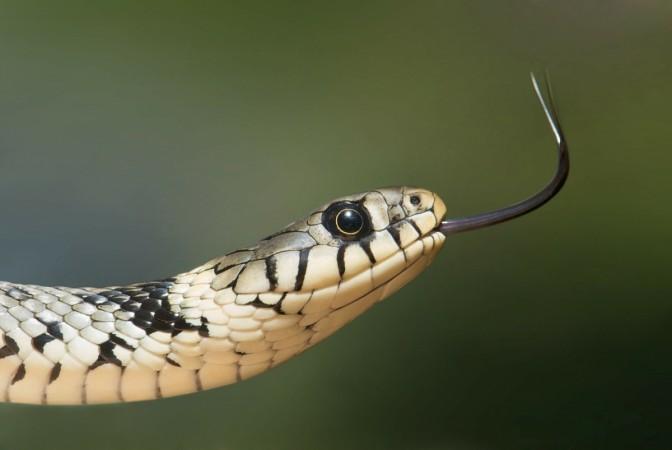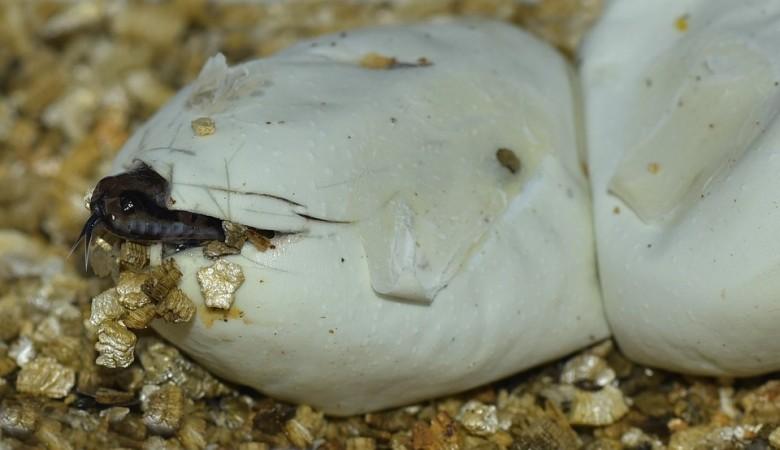- The fossilised baby snake found in an amber is 99 million years old
- The baby snake fossil shows the snakes anatomy has largely remained unchanged in centuries
- The origin of snakes remains a mystery, but the fossil offers insights on their natural habitat millions of years ago
- This is the first time scientists have discovered a baby snake fossil
Discovery of fossil remains helps scientists uncover the origin of species. Archaeologists and paleontologists have unearthed some of the oldest fossils dating back to the time when dinosaurs freely roamed the face of the earth. In the rarest discovery, scientists have found their first-ever baby snake fossil inside an ancient amber.
Lida Xing, a paleontologist from the China University of Geosciences in Beijing, came into the possession of the oldest fossil of a baby snake entombed into a tiny chunk of amber. After close analysis, scientists concluded that the amber preserving the incredibly rare baby snake fossil is 99 million years old, putting it at the time of the Mesozoic era.
That's one incredible time-capsule by nature.
The fact that this is the first ever baby snake fossil, it is treated with high value in order to study the mysterious origin of snakes. Dr. Xing took the rare fossil Michael Caldwell, a snake paleontologist at the University of Alberta, to further the research and published their findings in the journal Science Advances on Wednesday.

Does the newly-discovered fossil tell us where snakes originated from and how they spread around the world? Well, not exactly.
What does the baby snake fossil tell us exactly?
The fossil of the baby snake, Xiaophis myanmarensis (dawn snake of Myanmar), inside the golden-hued fossilised tree resin was found in the Southeast nation of Myanmar, and closely examined it inside a synchrotron, a powerful source of x-rays. The findings were then compared with those of the modern day snakes and surprisingly found many similarities.
According to the paleontologists Xing and Caldwell, the baby snake's body was made up of 97 vertebrae and it hand rib bones. The baby snake's general body shape helped scientists conclude that the snakes have conserved their anatomy for a very long time. Scientists found the resemblance of the fossil baby snake to modern-day species of pipe and grass snakes, which have smooth and glossy scales and a powerful jaw.
"This was a surprise. What it really means is that modern 'snakeness' evolved at least 100 million years ago," Caldwell told Inverse.
The baby snake's head was missing, which is why it created an identity crisis for fossil hunters who thought it to be a centipede or a millipede. Despite several scans, scientists were unable to identify if the baby snake was a newborn or an embryo.

But the amber picked up other materials along with the baby snake's body, including plants, cockroaches, and insect droppings. These clues suggested the snake lived in the forest, which is the first time scientists have been able to place snakes in forests during the Mesozoic Era.
The mystery continues…
Despite a breakthrough discovery, a lot of questions about snakes are left unanswered. Everything from the origin of snakes to which lizard's family they're closely related to, or even the evolution of complete loss of limbs. Scientists are also clueless as to why the forelimbs disappeared before the rear limps and their unique skull morphology.
"Just about everything about snakes is a mystery," Caldwell was quoted as saying.
"We must continue to look in even older rocks if we wish to understand the origin of snakes, not just their subsequent specializations and evolution," he concluded.

















